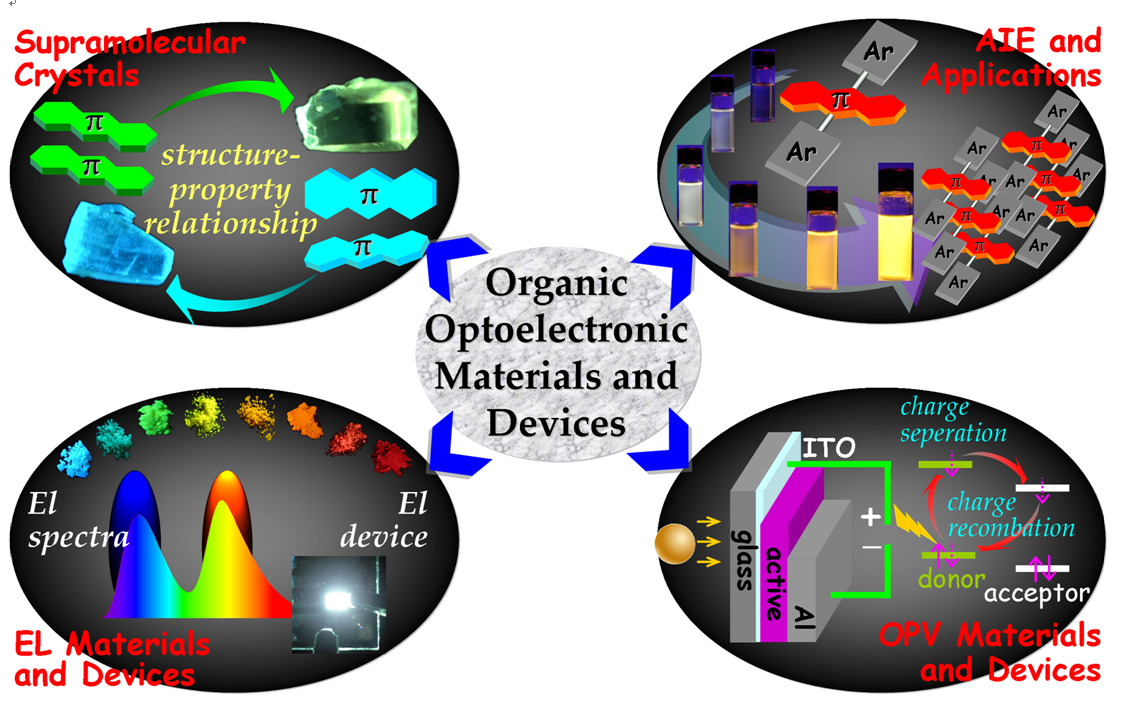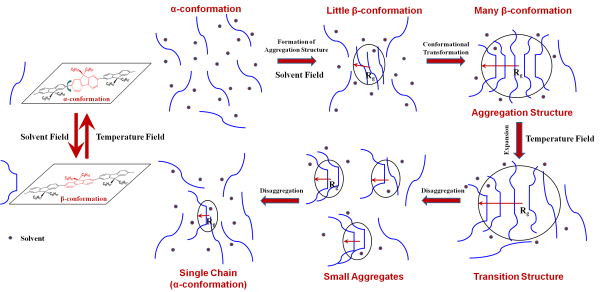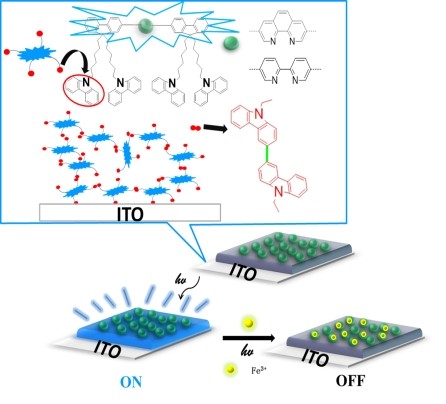Organic optoelectronic materials (organic materials, coordinated materials and polymeric materials) have attracted wide applications in various electronic devices. The major challenge in designing organic optoelectronic materials with high quantum yield, good charge mobility and strong absorbance relies on not only molecular structure but also supramolecular packing modes. This research group focuses on the construction of high-performance organic functional materials as well as their applications in organic light emitting diodes, organic solar cells and organic semiconductors. In addition, the practical application and the key technology of organic optoelectronics are also important issues we are concerned.




